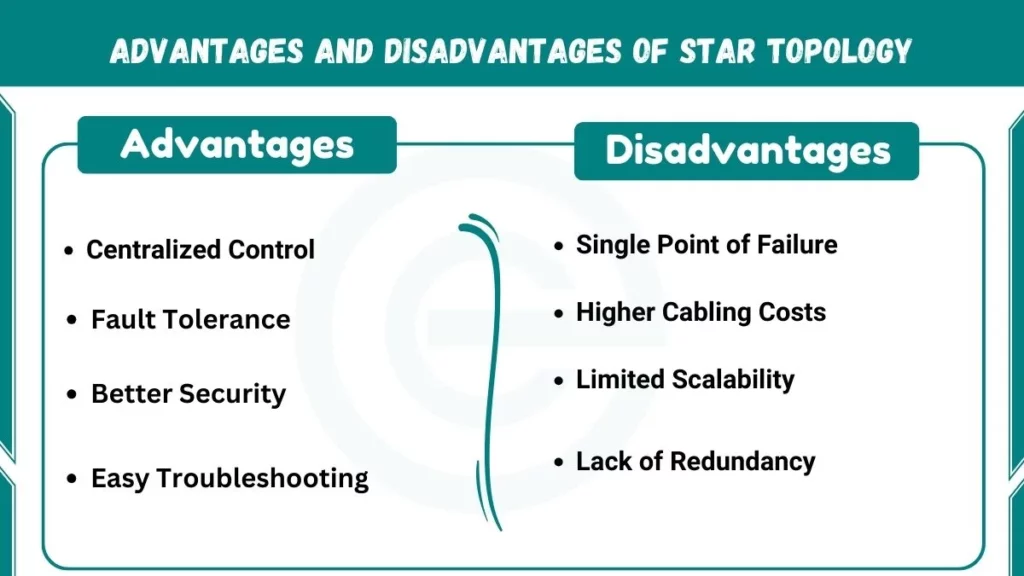Star topology advantages are centralized control, easy troubleshooting, and fault tolerance as nodes operate independently. But it also has drawbacks such as higher cabling costs, limited scalability, potential performance bottlenecks, and lack of redundancy.

Advantages of Star Topology
Here are some benefits of Star Topology:
- Centralized Control: Star topology features a central hub or switch. This hub acts as a command center allowing for easy management and monitoring of the entire network.
- Fault Tolerance: If one node (computer or device) fails, it does not affect the rest of the network. The central hub isolates the problem ensuring the network stays up and running.
- Easy Troubleshooting: Identifying and resolving issues becomes a breeze with all nodes connected to the central hub. Administrators can quickly pinpoint and address any problems.
- Better Security: The central hub can implement security measures like firewalls and access controls, protecting the network from unauthorized access and cyber threats.
- Efficient Broadcasting: The central hub can broadcast data to all nodes simultaneously, making star topology ideal for video conferencing or online gaming applications.
Disadvantages of Star Topology
Here are some drawbacks:
- Single Point of Failure: While the central hub is advantageous, it also poses a risk. If the hub fails the entire network goes down, causing a complete communication breakdown.
- Higher Cabling Costs: Star topology requires a dedicated cable run from each node to the central hub. This can lead to higher cabling costs, especially for larger networks.
- Limited Scalability: As the number of nodes increases the central hub may become overwhelmed, leading to performance issues or the need for a more powerful (and expensive) hub.
- Performance Bottlenecks: Heavy network traffic can cause congestion at the central hub, slowing down the entire network’s performance.
- Lack of Redundancy: In most star topologies, there is no backup or redundant hub, making the network vulnerable to hub failures.


